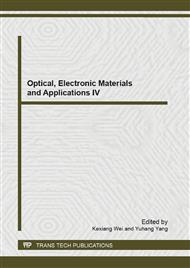p.428
p.433
p.437
p.441
p.447
p.454
p.459
p.463
p.467
Design and Error Estimates of Cut Tobacco Feeding by Wind System
Abstract:
The cut tobacco transporting is the absolutely necessarily important tache, whether the transportation process stability is a direct impact on production quality and manufacturing standards. The wind system is adopted by most tobacco companies because of it caused least disruptive of the cut tobacco structure and the pipe network layout of system is flexible, but the wind system is greater influence by itself, different control methods are caused greater difference of process indicators, for example essence and spice ingredients, moisture proportion and smoke flavor. Based on the above reasons, so we need to design the control method of wind system necessarily, in addition we must checkout the control accuracy opportunely, so that it is satisfied by the actual working conditions.
Info:
Periodical:
Pages:
447-453
Citation:
Online since:
July 2013
Authors:
Price:
Сopyright:
© 2013 Trans Tech Publications Ltd. All Rights Reserved
Share:
Citation:


